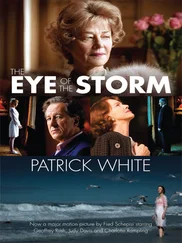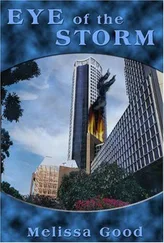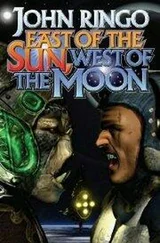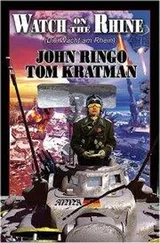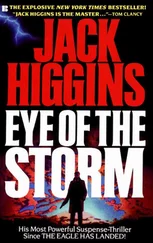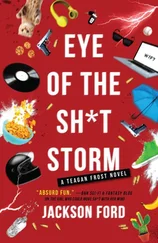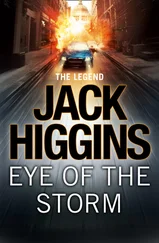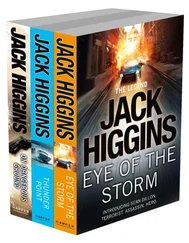* * *
“Echo Two Seven, target troops in the open, grid six-five-eight-two by four-two-zero-four!”
“Mortar section, hip-shoot east!” Lieutenant Todd shouted over the communicator.
The six tracks of the Bravo Company, First Battalion, Fourteenth Regiment (Separate) had been cranking at full speed on ground-effect down the trace of former Missouri Highway Eight heading for their next firing position. The trace was covered by small saplings, mostly poplar with an admixture of beech and pine. But the armored mortar carriers snapped those in a welter of flying sticks and leaves that had the front of the otherwise invisible mortar carrier covered in a green froth.
At the command Oppenheimer spun up the tracks and slammed the vehicle to the ground, causing a screech of complaint from the drive-train and a rooster-tail of flying soil and pulverized vegetation.
“Watch the fucking tracks !” Keren shouted as the driver slid the vehicle sideways, its mortar compartment oriented to the east.
“Aligned!” was all Oppenheimer said.
Keren hit the disconnect on this safety-harness, a necessity when going at nearly seventy miles an hour, and dropped his command chair into the belly of the track.
Before he could even get out of his seat, though, Adams and Griffis had slammed open the splinter-cover over the mortar. With a grunt the gun was lifted on its automated support pod and locked into place. Cristman hit the auto-align button and waited.
“Fucking Three Gun… ” Adams muttered. “COME ON, THREE GUN!”
“Section up,” Sergeant Moreland said as Three Gun finally got its gun into action and its automated alignment system online.
In the past, to get artillery or mortars to go where you wanted it to go, it was necessary to carefully align the guns using techniques very similar to surveying. The guns would be set up on a very straight line then further aligned using a series of highly calibrated sights. It took a long time and it was a pain in the ass.
The auto-alignment system, by contrast, used laser transmitters and receptors to determine where each gun was in relationship to each other and where they were in relationship to the world. Using that information the gunnery computer could give each gun a correction necessary to get it to go where the enemy was rather than, say, on top of friendly forces or the vast areas that had neither.
Coupled with the automatic gunnery system of the mortars, what had once been a five to ten minute process even with a ‘hip-shoot’ now took about twenty seconds for a good crew. Or ninety for three gun.
“Three rounds, prox, fire for effect,” the FDC ordered.
“Three rounds prox,” Keren repeated, reaching into the ammo box on his side of the carrier. “Fire for effect.”
He tossed a round to Adams who slammed it into the tube then another then another. All three of the rounds were out before any of the other guns had started to fire.
“Cease fire,” Sergeant Moreland ordered. “I want all four gun captains at my track. Now.”
* * *
“Keren,” Moreland said. “Very impressive. You were first gun up and, by a long shot, the first to fire. Care to tell me how you got prox, which is not the default setting, outbound about a half a second after the order?”
“Two ammo compartments on the carrier, sergeant,” Keren said, shrugging. “Port side is all contact. Starboard side we’ve got the flares, smoke and a small amount of standard set to prox and delay. That way we don’t have to dick around with setting it if we get a hip-shoot.”
“Port,” Sergeant West said. The four gun squad leader was a tall, rangy brunette from West Virginia. “That’s the left as you’re facing forwards. So… Griffis jumps over there to get the round and hands it across the tube?”
“Oh, hell no,” Keren said, shaking his head. “I pull the round and Adams shifts sides to hang. And, sorry Sergeant Moreland, I don’t go yelling ‘Hang it’ and ‘Fire’ unless we’re on timed fire. He just hangs the son-of-a-bitch and fires it as fast as we can get them out the tube. Hipshoots are about speed.”
“And thus we find why he was the artillery coordinator for the Ten Thousand,” Sergeant Moreland said. “Stall, you wanna tell me why it took you nearly a minute and a half to get up?”
“No excuse, sergeant,” the third squad leader said. Short, black haired and hefty for a juv, Wendell Stall was from the Cleveland, Tennessee Urb and had fought most of the war in the 32 ndTennessee “Volunteers” in the battles around Chattanooga. The Volunteers fought the whole war in fixed mounts with fairly constant targets and he was having a hard time adjusting to maneuver warfare.
“That isn’t an answer,” Moreland said. “We’ll discuss this later. News from company is that we well and truly smoked the hilltop. We’re staying here and may have another fire mission coming up. Get back to your tracks.”
* * *
“Hedren would have taken out most of the mortar fire,” Captain Cox said. The observer sent in from Corps shook his head. “Your mortars need to fire together to overwhelm it.”
“Hipshoot,” Cutprice said looking through his sight. “Get the metal on the target as fast as possible.”
The company had been in road-march condition when it hit this defensive point on the ridges east of Huzzah creek. The first intimation had been a flight of anti-armor missiles, all of which had been “graded” as destroyed. Given that they were actual rockets, just not anti-armor ones, and that the anti-missile system took them all down, the observer would have had a hard time grading it otherwise.
Bravo company was following Missouri Eight with Alpha well behind it and Charlie flanking them well to the north. The battalion was, notionally, screening an advance of the entire regiment heading towards an objective to the east. But it was a movement to contact. And they had contact. They just had to find out how much.
The Huzzah was a very minor creek, not much of an obstacle, but the ridges long its length were something else. There were only a few places the tracks could maneuver on them. He glanced at his map and then over his shoulder.
“Launch a UAV,” he said to his RTO. “Order Second Platoon to maneuver to the road north of here. Cross the Huzzah there and try to push in on the flank. Stay mounted; we’re in a hurry. Mortars are to begin full speed bombardment of the target.”
* * *
“Fire for effect, mix prox and delay, thirty rounds, on command.”
“Opie, set the delay rounds,” Keren said, sliding to the rear of the compartment and starting to pull out rounds. The standard rounds came set for contact. By dialing the rounds slightly one way or the other they could be configured for delay, which exploded a fraction of a second after it hit something, or proximity which exploded two meters above the ground.
Something was troubling him and it suddenly hit him as he was setting the third round.
“Sergeant Moreland,” he said quietly over his comm. It was set to the command channel so that only other squad leaders and the platoon command group, Moreland and Lt. Todd would hear him.
“Counterbattery.”
* * *
Lt. Edison McIntosh wished he had Lt. Todd’s position. But he also knew that the mortar platoon commander had about ten times his experience. Todd had been a platoon leader before McIntosh’ father was born and had fought all the way through the Posleen War rising to the rank of Major.
However, the former Major had only fought the Posleen. And McIntosh had been carefully instructed by his boss on one thing that the Lieutenant probably didn’t count on.
Читать дальше

